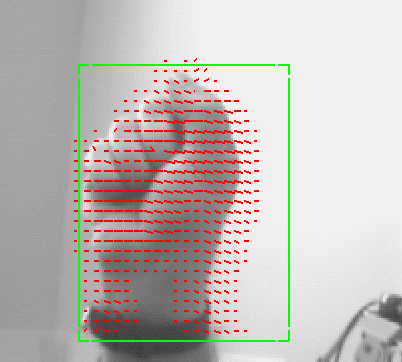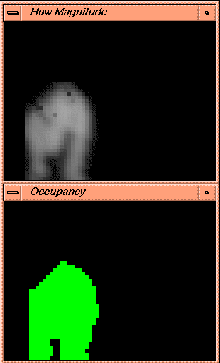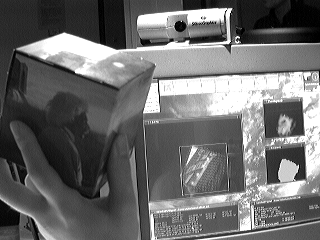


|

|
| See full image of optical flow field of moving hand. | See full image of optical flow field magnitude and figure/ground separation. |
Shown here is live video (1.4 FPS) overlaid with a red flow field, surrounded by a green tracking window. The magnitude of the flow vectors is rendered at left, brighter pixels indicate faster motion, black indicates no motion. The green blob indicates the result of figure / ground separation.

See full image of hardware setup. |
Our philosophy is to use commonly-available, low-cost approaches on
workstations. Investing in custom computing power does not always pay
off, since the desktop processing power rapidly obsoletes the
hand-made machines, and are more maintainable.
|